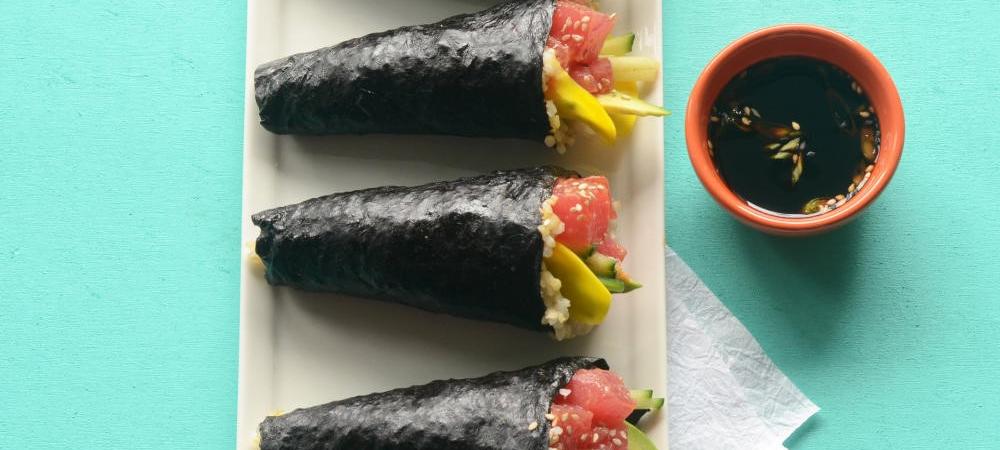Yellowfin Tuna
Species Description
Yellowfin tuna are known in Hawaii as "Ahi" - the same name used for bigeye tuna due to their physiological similarities. This species generally has a slimmer build than bigeye – mainly because they live closer to the surface where temperatures are slightly higher, therefore requiring less body fat to keep them warm.
Yellowfin tuna have a dark, metallic blue colouration on the top of their body, and are a blend of yellow and silver on the underside, which provides camouflage in the ocean when hunting for prey. Prey looking up below the tuna will not be able to distinguish the fish from the glare of the surface water. Likewise, prey from above will not be able to see the tuna as the dark blue colour on the fish blends in with the darkness from the deep. This is also known as countershading and is seen across many marine animals.
Yellowfin tuna live worldwide in both tropical and subtropical waters but are not found in the Mediterranean Sea. Like other tuna species, they are highly mobile and conduct large oceanic migrations in search of food and favourable conditions for spawning.
Their length averages at 1.5m (4,92 ft), with the maximum caught length being 2.08m (6.82 ft). The max. published weight is 176.4 kg and the oldest yellowfins recorded have been nine years old.
Being high up on the food chain, yellowfin tuna typically feed on fish and squid. However, they are the prey of top predators such as sharks, larger tuna and toothed whales.
Yellowfin tuna are found near the surface of the ocean. Being particularly sensitive to low concentrations of oxygen, they are not usually caught below a depth of 250m in the tropics.
All yellowfin become sexually mature once they have reached a length of 1.2 m (usually about two or three years into their life) and are multiple spawners, meaning they spawn every three days over the spawning period, producing between one and four million eggs each time.
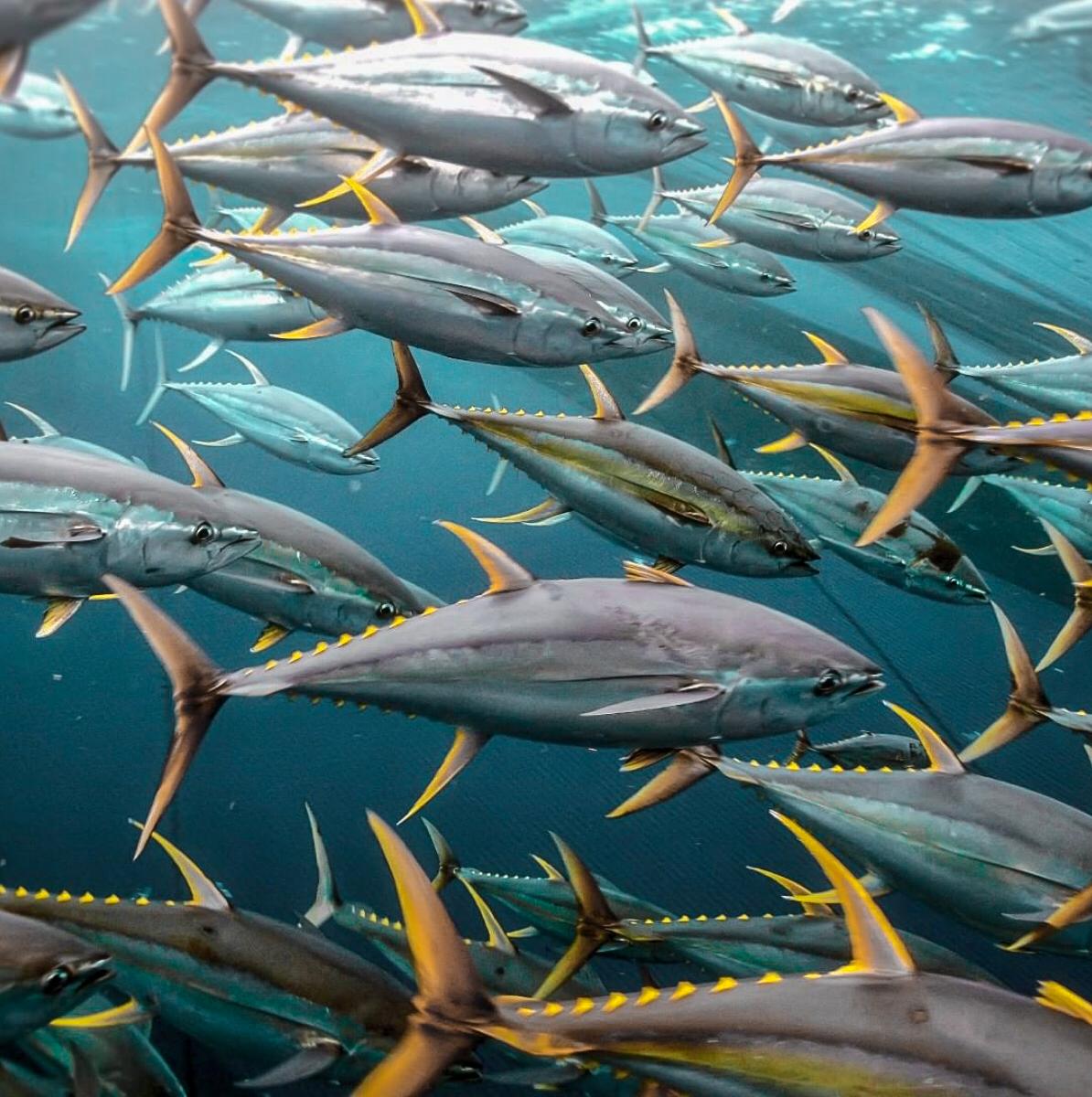
Gallery
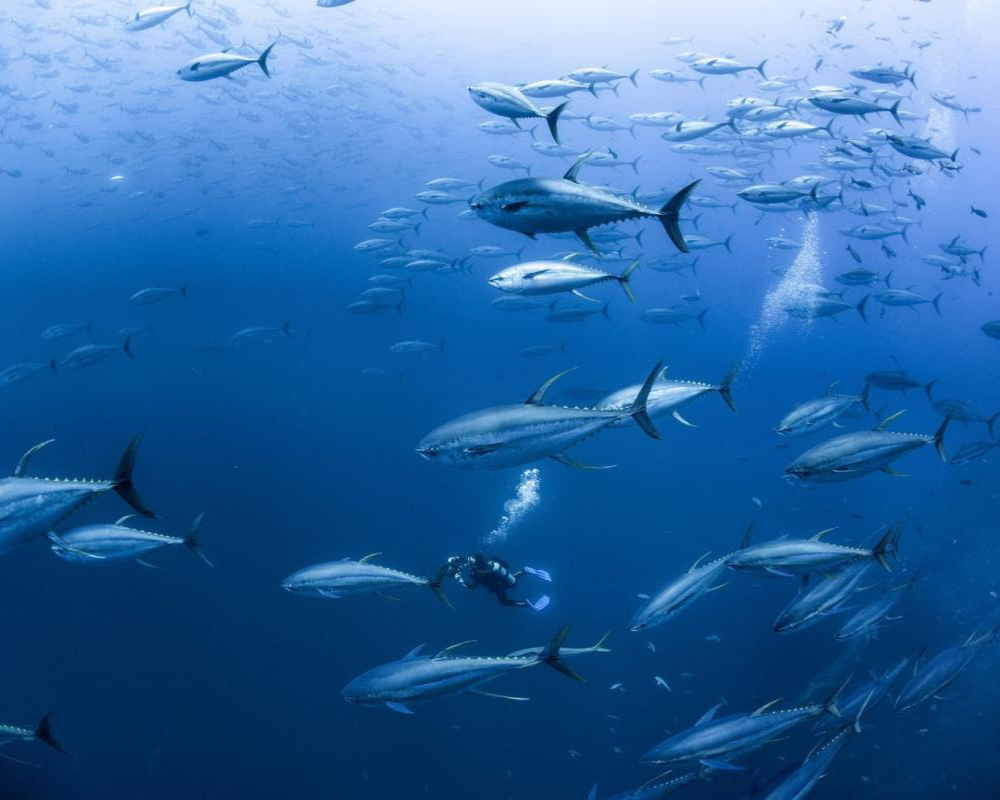
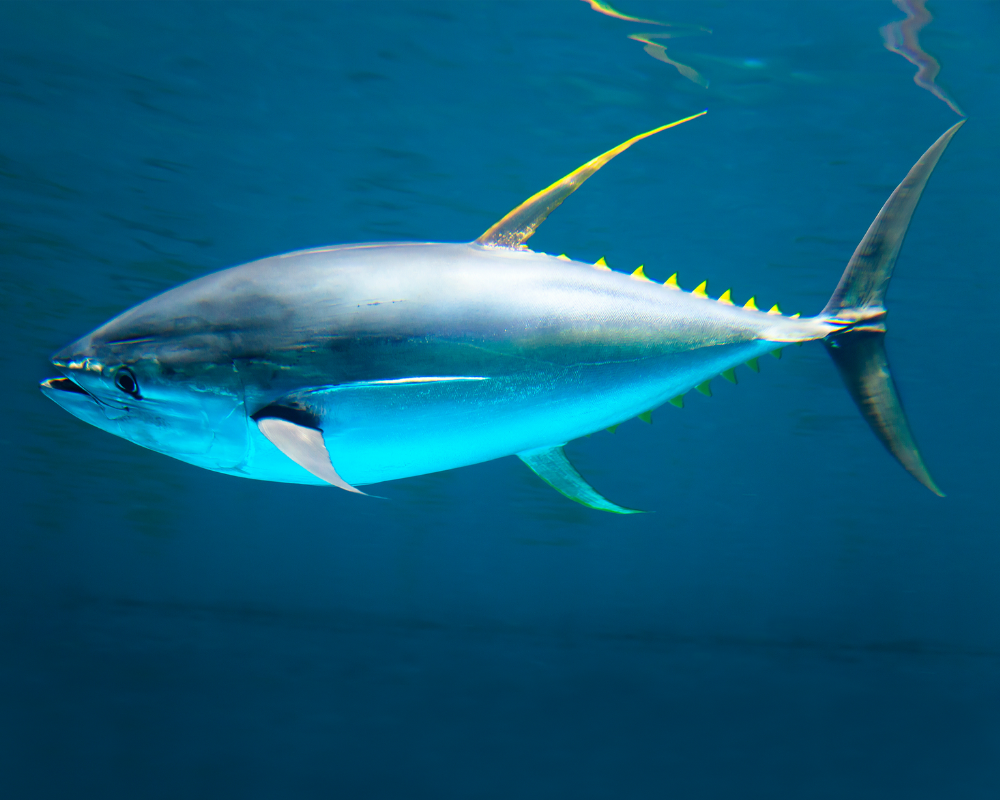
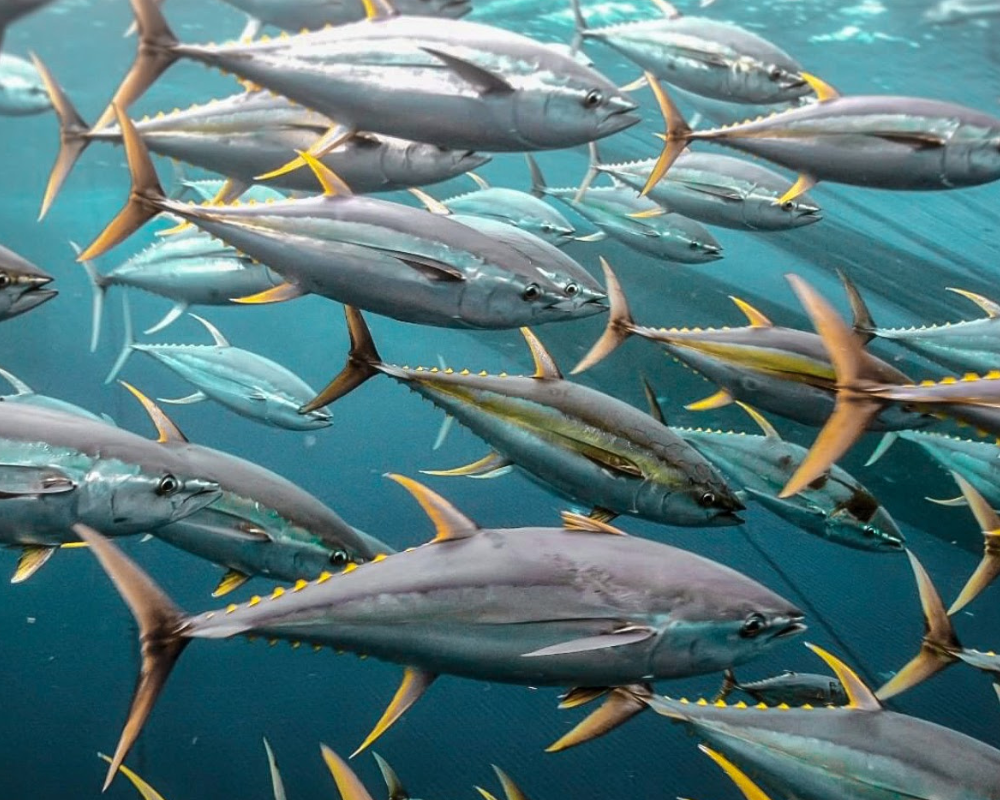
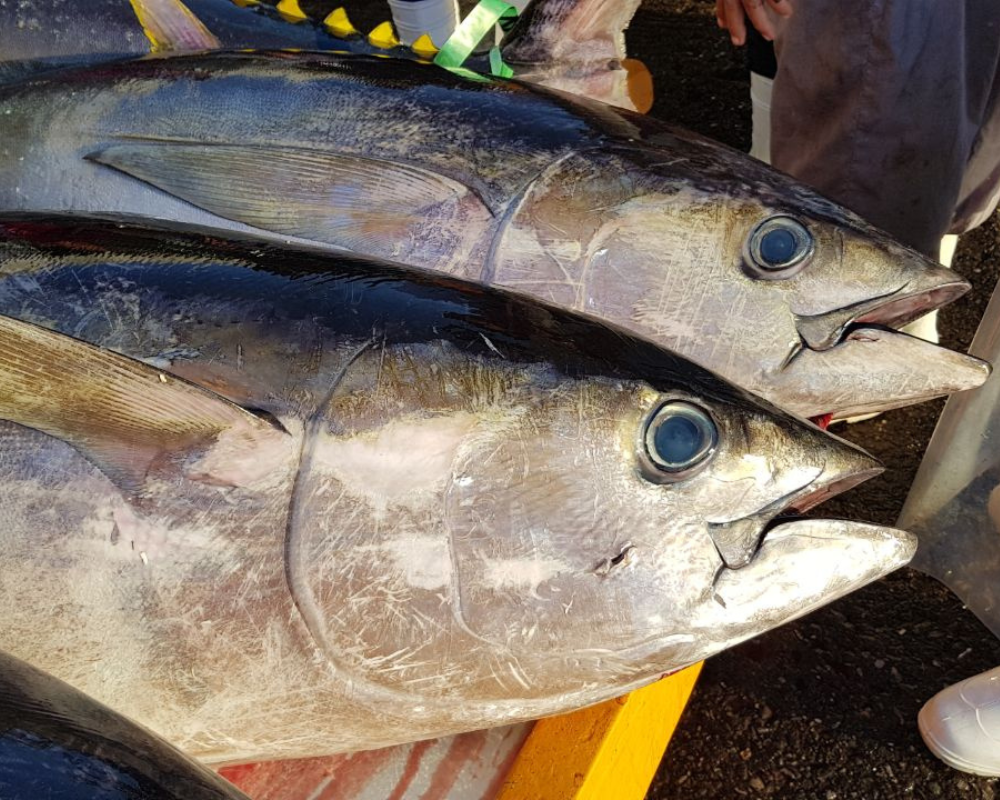
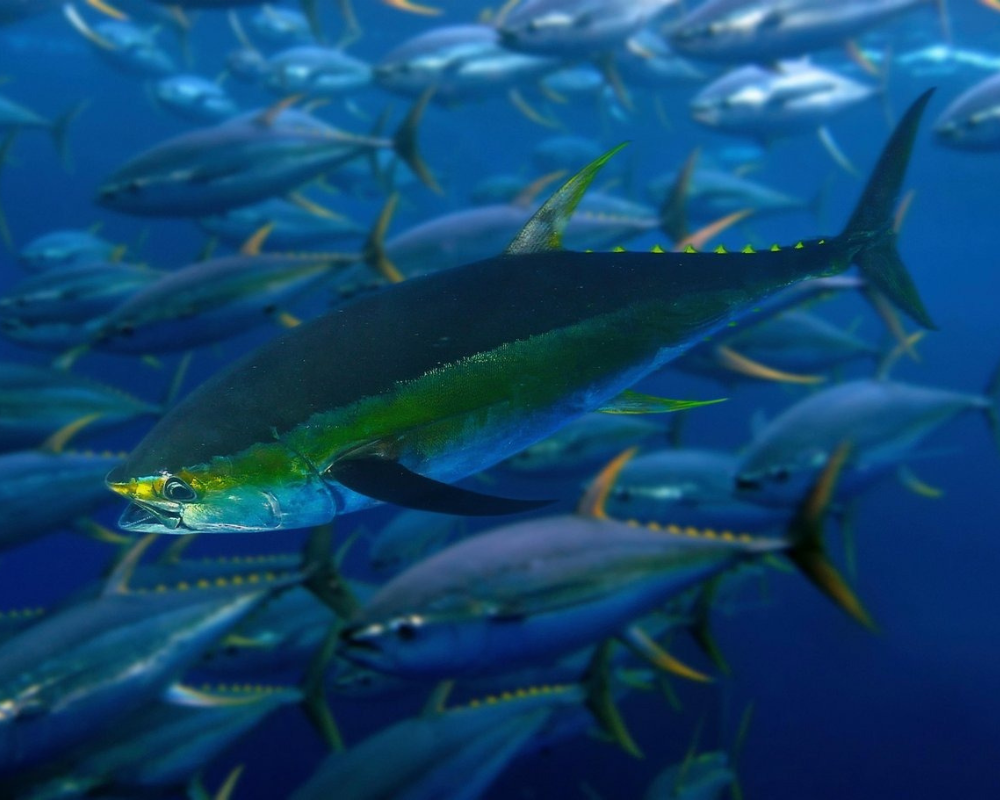

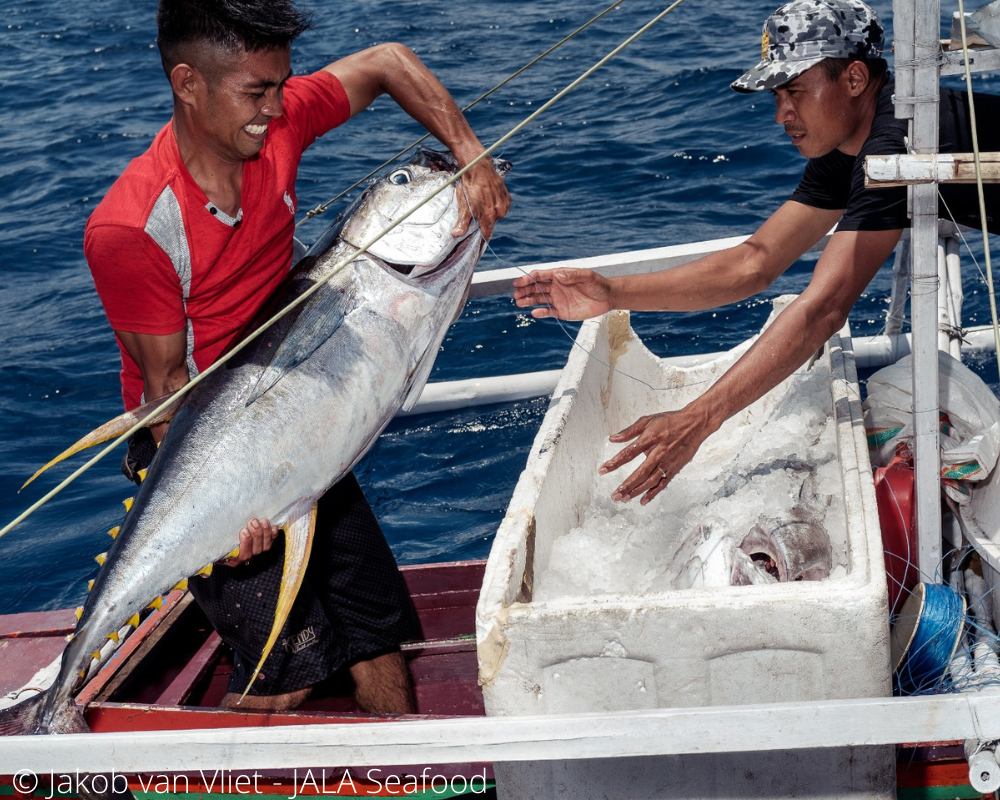
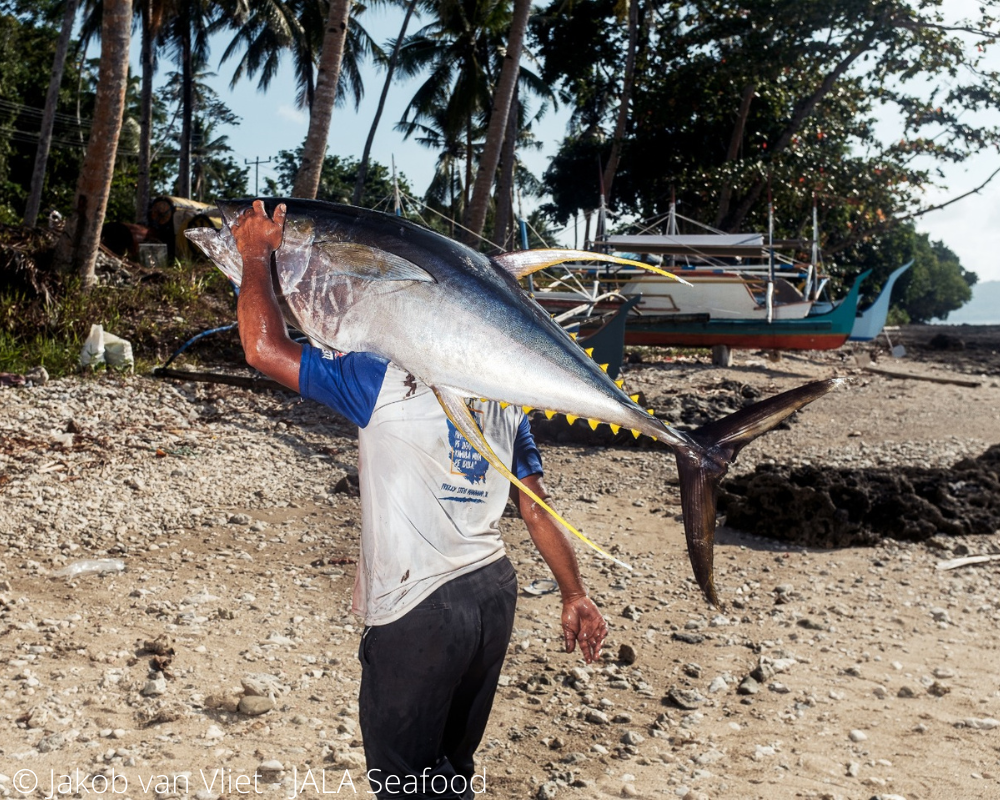
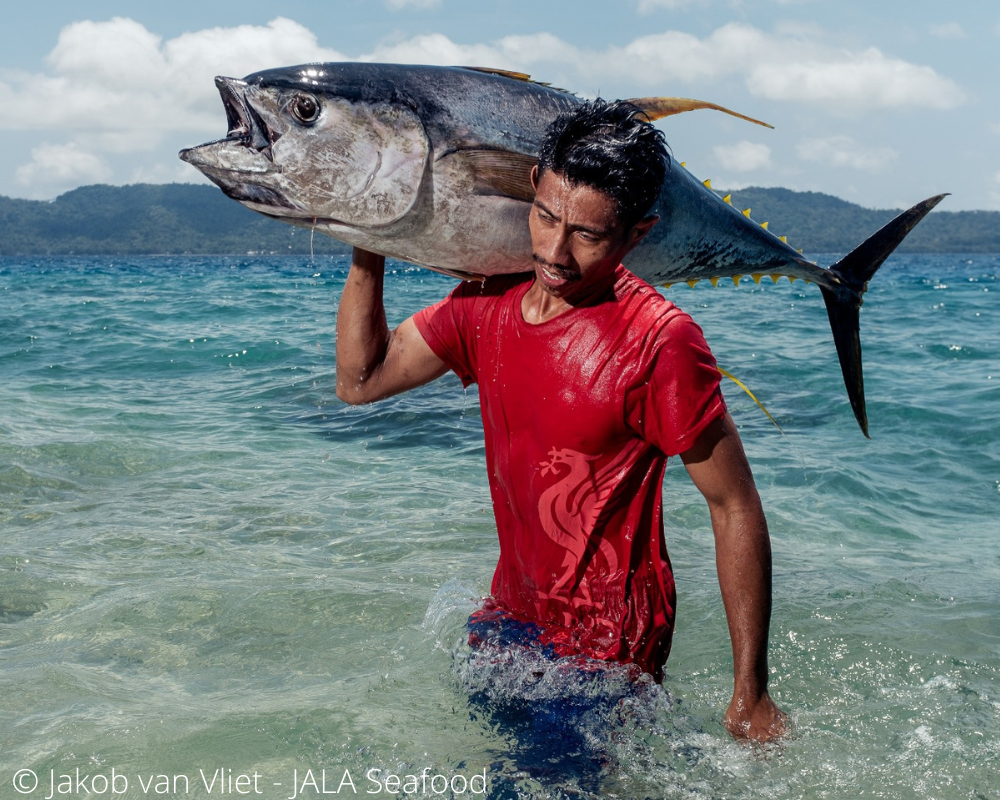
Sustainability
Yellowfin tuna are highly migratory, which means managing fisheries is difficult because it requires compliance from many different governing bodies.
Across Indonesia, IPNLF are working towards creating Fishery Improvement Projects (FIPs) to target pole-and-line yellowfin fisheries in the Indian and Pacific Ocean, to improve the sustainability of the stocks.
The Indian Ocean Tuna Commission (IOTC) is the inter-governmental organisation responsible for the management of tuna fisheries across the Indian Ocean and in 2015, they declared the yellowfin stock as overfished. However, IPNLF believes that there has not been significant managerial changes implemented to reverse or even slow the damage.
In 2021, IPNLF and a combination of more than 100 conservation organisations, fishers and responsible businesses, called for the management of tuna fisheries in the Indian Ocean to undergo urgent restructuring.
Yellowfin tuna is a very popular food item and is fished all over the world using a range of different methods, all with varying levels of sustainability. Large, industrial longline and net fisheries are the least sustainable, contributing to not only overfishing, but also to the bycatch of endangered species like dolphins, sharks and turtles, as well as to ocean plastic pollution and ghost fishing. Yellowfin tuna is currently classed as 'Near Threatened' on the IUCN Red List.
One-by-one fishing eradicates these threats because only one fish is caught at a time, which reduces the potential for over fishing as well as the amount of bycatch. One-by-one fishing also contribution very little to ocean plastic pollution because the lines are managed by each fisher, so losses are minimal.
Most yellowfin tuna are so large that handline fishing is the most efficient method because there is more control from fisher to fish. Smaller yellowfin tuna that often associate with schools of skipjack tuna are caught by pole-and-line fisheries and are sold as secondary catch.
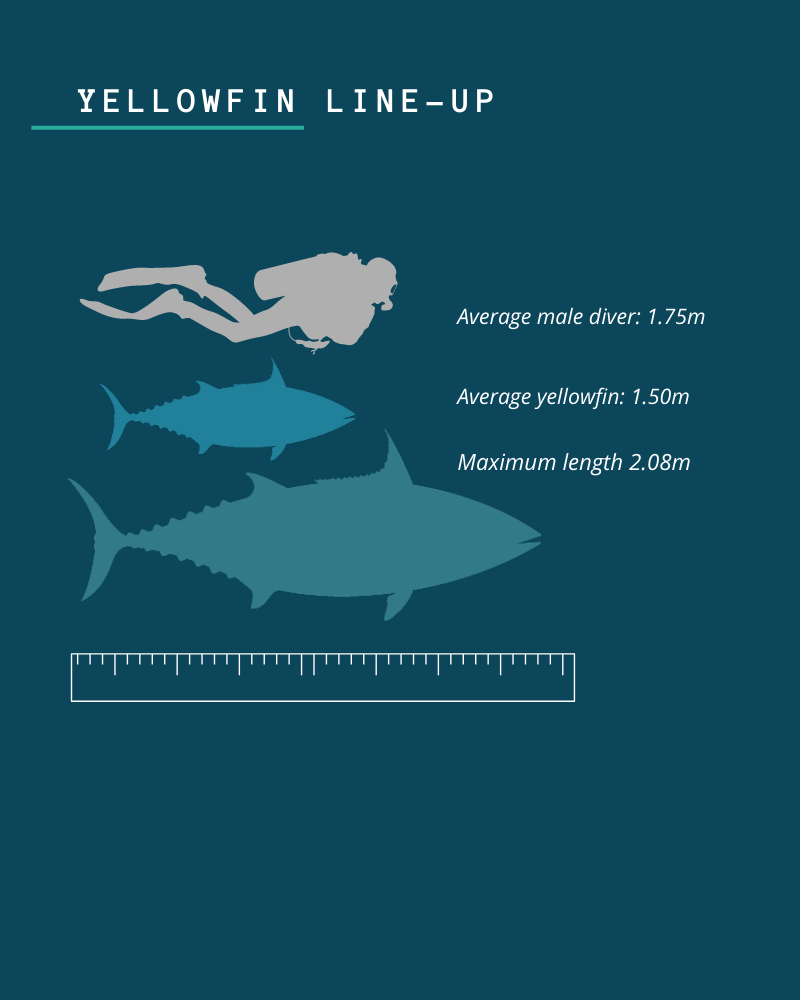
Dive Deeper...
Want to know more about yellowfin tuna?
Download the reports to learn more about the environmental status of yellowfin tuna.
Yellowfin Tuna Fisheries
Seafood
The yellowfin, or the 'Ahi', is the most versatile of the tuna species when it comes to preparation. This is due to having fatty and firm flesh, yet a more delicate flavour and pinker meat. A good quality yellowfin tuna can be sliced and served up in sashimi dishes, yet still able to prepare for the canning process and preservation with its flaky loins. Yellowfin tuna occupy more shallow waters, meaning their fat content is lower than bigeye, accounting for the difference in flavour.
Yellowfin tuna is eaten in different forms across the world. In the United States, yellowfin tuna is typically eaten as sushi, whereas in European restaurants, yellowfin will be served as a steak. Due to its meaty and firm texture, yellowfin tuna can be eaten raw in sushi, sashimi or poke, as well as seared, grilled or sautéed. This is also an excellent fish to smoke, leaning into the uniqueness of a tuna with a slice of firm meat yet a milder flavour.
As with the other species, yellowfin tuna is an excellent source of extra lean protein, with a plethora of nutrients including niacin, vitamin B6 and B12, and phosphorus, whilst remaining low in fat and sodium.

